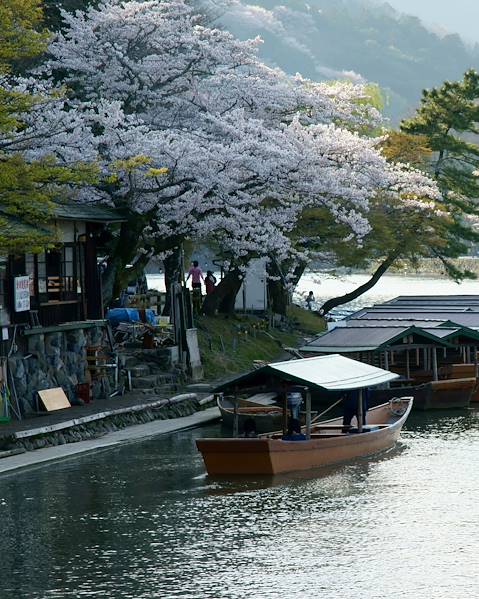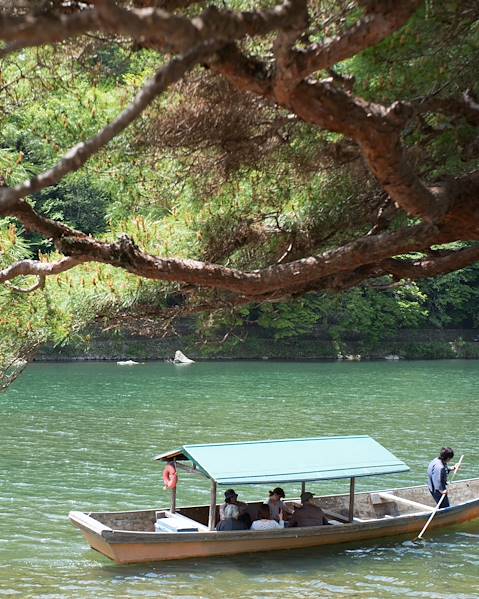Japan is a fascinating nation comprised of thousands of islands spread across the geologically active Pacific Rim. From the towering peaks of Mount Fuji to the serene beauty of Yakushima’s forests, the geography of Japan is varied and dynamic. Whether you seek adventure in the snow-capped mountains, tranquillity by the coast or excitement in the city, it’s a country that will leave you spellbound.
Overview
Nestled along the Pacific Coast of East Asia, the shimaguni (archipelago nation) of Japan is a treasure trove of natural wonders. Known locally as Nihon or Nippon, Japan comprises four main islands: Honshu, Hokkaido, Kyushu, and Shikoku. These islands, along with thousands of smaller ones, cover a total land space of 142,000 square miles and stretch in a northeast-southwest arc over 1,900 miles. Surrounded by the Pacific Ocean, the Sea of Japan and the East China Sea, the culture and geography of Japan are heavily influenced by its maritime location, resulting in an incredible blend of coastal plains, rugged mountains and volcanic activity. While the national capital, Tokyo, in east-central Honshu, is one of the world’s most populous cities, visitors can also explore Japan’s awe-inspiring natural landscapes.
Climate
The Japanese islands are for the most part in a temperate zone, but latitude and longitude aren’t the only things that influence climate. Ocean currents, such as the Kuroshio and Tsushima from the south, warm the Pacific side of the islands and those near the Korean straits, while the cold subarctic Kurile current toward Hokkaido brings with it nutrient-rich air, perfect for the surrounding marine life. Icy winds from the northern Asian continent blow east over the Sea of Japan, dumping heavy snow in the northwest. As a result, there’s a marked contrast between winters on the coast facing the Sea of Japan, known as ‘snow country’, and the clear, crisp winters on the eastern shore. Japan still has abundant rainfall though since seasonal winds carry moisture from the surrounding waters. So, in addition to the four seasons we experience in Europe, Japan also has a short rainy season in June.
Majestic Mountains
Japan is renowned for its breathtaking mountain ranges, with the iconic Mount Fuji reigning supreme. Rising to a magnificent height of 12,388ft, this dormant volcano is a symbol of Japan’s natural beauty. But Fujisan is just the tip of Japan’s snow-capped iceberg. The Japanese Alps, stretching across Honshu, offer a haven for hikers and nature enthusiasts. From the frosted peaks of Mount Tateyama to the picturesque highlands of Kamikochi, they provide a stunning backdrop to Japan holidays.
The Ring of Fire
Japan lies within the Pacific Ring of Fire, a region known for its strong volcanic and seismic activity. The country experiences more earthquakes than most and is vulnerable to tsunamis caused by underwater quakes and volcanic eruptions. This geographical hotspot has shaped Japan’s landscape, creating over 100 active volcanoes. Those born since 1900 include Showa Volcano on Hokkaido and Myojin Rock off the Beyoneisu (or Bayonnaise) Rocks in the Pacific. Many, like Mount Fuji, are conical in shape, while others form steep lava domes like Mounts Dai and Unzen. The volcanic archipelago of Kyushu is home to Mount Aso, one of the world’s largest calderas (basin-shaped volcanic depressions). Additionally, the hot springs, or onsens, scattered throughout the country are a testament to Japan’s volcanic heritage, offering relaxation and rejuvenation to locals and visitors alike.
Maritime Marvels
With a coastline stretching some 18,500 miles, Japan boasts an abundance of maritime marvels. From the vivid waterfront cityscapes of Tokyo and Osaka to the tranquil fishing villages of Hokkaido and Okinawa, Japan’s coastal regions offer a diverse range of experiences. The Seto Inland Sea is dotted with picturesque islands and the iconic Itsukushima Shrine is a must-visit destination. And Japan’s marine biodiversity is hard to beat, with coral reefs, sea turtles and even whale-watching opportunities in the Ogasawara Islands.
Verdant Valleys and Enchanting Forests
Beyond the mountains and coastlines, the geography of Japan comprises lush green valleys and enchanting forests. The Kiso Valley, nestled in the Japanese Alps, is a picturesque region known for its traditional villages, ancient hiking trails and stunning waterfalls. The mystical forests of Yakushima, an UNESCO World Heritage Site, transport visitors to a world straight out of a fairy tale. These verdant landscapes not only offer breathtaking beauty but also provide a sanctuary for Japan’s diverse flora and fauna.
Rivers and Lakes
The geography of Japan also includes numerous rivers and lakes that play a vital role in shaping the nation’s landscape and culture. The Shinano River, Japan’s longest, meanders through the heart of Honshu, offering scenic beauty and recreational activities, while Lake Biwa, the largest freshwater lake in Japan, is a haven for nature lovers and a source of inspiration for artists and poets. Many of Japan’s calderas, especially in the northeast and southwest, are filled with water, such as Lakes Kutcharo, Towada and Ashi. These bodies of water not only provide sustenance but also contribute to the country’s overall charm and tranquillity.
As you can see, the geography of Japan presents exceptional natural and cultural riches, from larger-than-life block-busting peaks to moments of maritime calm. Experience it all, from world-famous sights to lesser-known hidden gems, on a tailor-made trip with Original Travel.
















